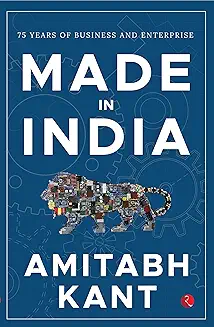If you’ve ever watched a chaiwala orchestrate a morning rush with the precision of a Swiss watchmaker, or seen a kirana store owner juggle inventory, credit, and customer loyalty without a single spreadsheet, you’ve glimpsed the Indian way of doing business. It’s not just commerce—it’s choreography. And it’s about to take center stage globally.
The “India Way” isn’t a textbook model—it’s a mindset. It’s improvisational, resilient, relationship-driven, and deeply rooted in cultural values. As Wharton professors Peter Cappelli, Harbir Singh, Jitendra Singh, and Michael Useem wrote in their seminal book The India Way, Indian business leaders “innovated their own ways of doing business in every possible way, right from strategy to leadership, talent and organisational culture”.
Unlike the Western model, which often prioritizes shareholder value and quarterly returns, the Indian approach is holistic. It blends profit with purpose, agility with empathy, and ambition with community.
Key traits of Indian business ethos are
- Jugaad: A colloquial term for frugal innovation and creative problem-solving.
- People-first leadership: Employees are assets, not costs.
- Improvisation over rigid planning: Flexibility is a virtue, not a weakness.
- Purpose-driven growth: Business success is tied to national and social progress.
The Western business model—think Silicon Valley startups or Wall Street giants—is built on structure, scale, and systems. It thrives on data, process optimization, and standardized practices. But it often falters in unpredictable environments.
India, on the other hand, is a masterclass in managing chaos. With its labyrinthine bureaucracy, patchy infrastructure, and cultural complexity, doing business here is like playing chess on a rollercoaster. And yet, Indian entrepreneurs thrive.
“Western models rely on predictability. Indian models embrace uncertainty,” says Dr. Sneha Master, a business historian at GLS University.
Founder Ritesh Agarwal of OYO Rooms didn’t just copy Airbnb—he reimagined it. After two failed attempts, he pivoted to a model that standardized budget hotels across India. The result? A $2.7 billion hospitality empire. Vijay Shekhar Sharma’s fintech unicorn Paytm didn’t just digitize payments—it democratized them. With innovations like the SoundBox (a device that announces payments aloud), Paytm adapted to India’s noisy, cash-heavy retail landscape. Sachin and Binny Bansal built Flipkart, India’s answer to Amazon, by localizing everything—from cash-on-delivery to regional language support. Walmart took notice and acquired it for $16 billion.
India’s business DNA is built for the future. Here’s why:
| Feature | Indian Model | Western Model |
| Flexibility | High (Jugaad culture) | Moderate |
| Relationship Focus | Deeply personal | Transactional |
| Risk Appetite | High, often self-funded | Venture capital-driven |
| Scalability | Organic, frugal | Capital-intensive |
| Cultural Adaptability | Multilingual, multiethnic | Homogeneous markets |
“In India, business is personal. Trust is currency. And adaptability is survival,” says Ganesh Ayyar, EVP at Cognizant.
India isn’t just catching up—it’s leapfrogging. With over 1.4 billion people, a booming middle class, and a digital-first youth, the country is a fertile ground for innovation.
According to McKinsey, India is one of the fastest-digitizing economies in the world, with over 500 million internet users and 350 million smartphone users. Add to that a startup ecosystem projected to host 250 unicorns by 2025, and you’ve got a recipe for global dominance.
Indian entrepreneurs are uniquely equipped to navigate global markets. They’ve grown up in a country where diversity isn’t a buzzword—it’s a daily reality. This gives them an edge in understanding consumer behavior across geographies.
“Indian business leaders think in English and act in Indian,” says R. Gopalakrishnan of Tata Sons. That duality is a superpower.
While Western companies like Western Union and Amazon have tried to transplant their models into India, they’ve often had to pivot. Regulatory hurdles, consumer behavior, and infrastructure challenges forced them to adapt or risk irrelevance.
Even giants like Uber had to introduce cash payments and local car models to survive in India. Localization isn’t optional—it’s existential.
The next wave of global business won’t be purely Western or Eastern. It will be hybrid—combining the structure of the West with the soul of the East. And India is already leading the charge.
From frugal innovation to decentralized leadership, Indian business practices are being studied, adopted, and celebrated worldwide. The “India Way” isn’t just a cultural curiosity—it’s a blueprint for the future.
As the world grapples with volatility, uncertainty, and complexity, India’s business model offers a masterclass in resilience. It’s not perfect—corruption, infrastructure gaps, and regulatory red tape remain challenges—but it’s evolving fast.
So next time you see a chaiwala balancing ten cups on a tray while taking mobile payments and remembering everyone’s order, don’t just admire the hustle. Recognize the genius. Because that’s the India Way—and it’s coming for the world.
Realated Reading
![]()




